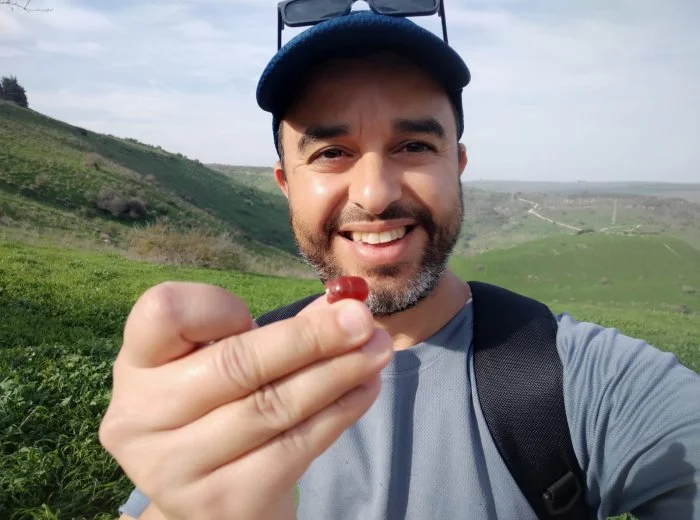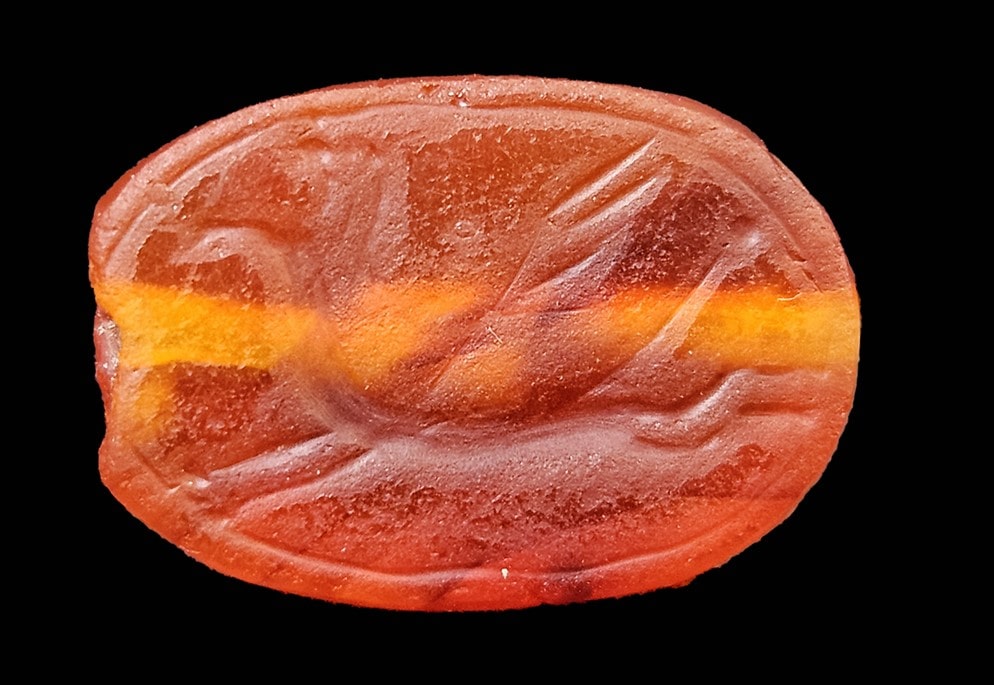Rare 2,800-year-old Assyrian Scarab Seal-Amulet Found in Tabor Nature Reserve
A rare scarab amulet from the First Temple period was recently discovered by a hiker in the Nahal Tabor Nature Reserve in the Lower Galilee and turned over to the Israel Antiquities Authority (IAA).

The scarab, made from reddish-brown carnelian stone, is estimated to be 2,800 years old and of Assyrian or Babylonian origin.
The front is carved in the shape of a beetle, and the back has engravings that depict a griffon or a winged horse, a common motif of the Ancient Near East.
When he discovered the artifact, Erez Avrahamov, 45, was on a two-day leave from IDF reserve duty, taking advantage of a sunny day after recent rains.
“I saw something shimmering on the ground. At first, I thought it was a bead or an orange stone. After I picked it up, I realized it had engravings resembling a beetle. I called and reported the amazing find to the Antiquities Authority,” Avrahamov said, according to a Wednesday IAA press release.


Abrahamov found the scarab near the bottom of Tel Rekhesh, associated with the city of Anaharath mentioned in the Book of Joshua.
During the 6th-7th centuries BCE, “a large citadel stood at the top of the mount, where bathing facilities, halls and ritual chambers were found from the period of Assyrian rule. This rule, as we know, was responsible for the destruction of the Kingdom of Israel” in the First Temple period, IAA archaeologist Dr. Yitzhak Paz explained.
The scarab is likely from this period of Assyrian control and “may indicate the presence of Assyrian (or perhaps Babylonian) officials at Tel Rekhesh during this period,” Paz added. If the scarab can be conclusively dated and this connection proven, it will be a discovery of “great significance,” he said.
Scarab seals of a similar type, fashioned into a dung-beetle shape from a wide variety of stones, originated from Pharaonic Egyptian culture but were widely used throughout the ancient world.
The orange color and material of the scarab found by Abrahamov are fairly rare, the IAA said, as most were made from a softer bluish stone and then covered in glaze, which in almost all cases has worn away with time.

The IAA said it’s likely that the recent rains uncovered the scarab. “As in every winter, when the rainy season arrives, antiquities start to ‘float’ and rise to the surface,” IAA Director Eli Escusido said.
“I am imploring the public to obey the Antiquities Law, and request that if you come across an archaeological find, report it to the Antiquities Authority while in the field. The exact location where an object is found is extremely important… The special scarab will be stored in the state archive, where we can research and learn more about it,” he said.
Under Israeli law, any found man-made object dating from before 1700 is to be turned over to the authorities. Abrahamov received a good citizenship certificate for doing so.




